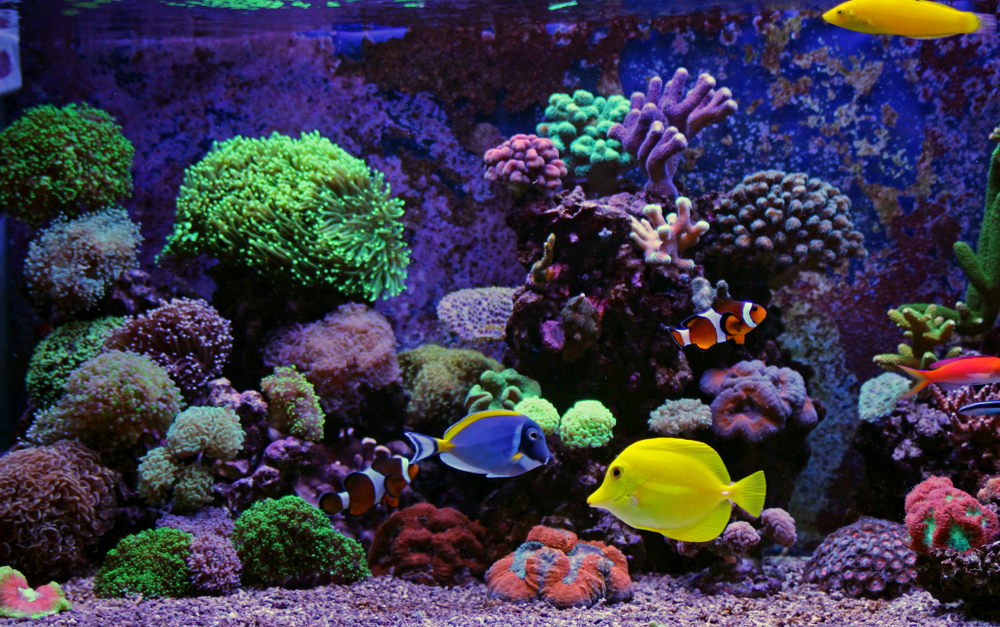
/reef-aquarium-504106122-5af89ebe3418c60038cd2123.jpg)
In the list I’m going to provide you will see that I label each marine salt for you as synthetic or mined. Fish only saltwater aquariums are not going to need an expensive or advanced salt mix so a budget mix will do the job. Then there is fish only and fish only with live rock (FOWLR) setups. However, for a Acropora heavy tank, many reefers like to keep their alkalinity lower in order to keep it more stable and closer to natural sea water. Softie and LPS tanks can tolerate more swings so going with a mix with a high alkalinity isn’t going to hurt you. For example, SPS corals like Acropora are going to need different parameters and trace elements vs. Every tank has different needs depending on the type of corals you have. This is the very first statement I’m going to lay out for you.
Chloroquine Phosphate Aquarium Dosing Calculatorĩ Conclusion (Best Reef Salt Mixes) The Best Salt Mix Is The One Closest To Your Ideal Parameters. Research conducted on blue gouramis, black widow tetras, Buenos Aires tetras and zebra danios show they can tolerate 1 part per thousand (ppt) but that they start to suffer at higher dosages. Studies have shown that, as you’d expect, fry aren’t as tolerant of salt as larger, mature fish. So make sure you remove all invertebrates and any zeolite before using salt. If you’re using zeolite to reduce the ammonia levels in your freshwater tank, the effect can be reversed during a salt treatment. Some invertebrates are very sensitive to salt, such as snails. If you don’t act fast at this point your fish may well die.īut opinions vary, and some research shows that even supposedly salt intolerant fish can adjust to very small levels of salt in their water. Some barbs, South American tetras, corydoras, livebearers, catfish and koi are well-known for their salt intolerance.Ī high salt concentration can make them lose their equilibrium and they will simply roll over. However, there are some fish that don’t respond well at all to salt. Some fish, like cichlids or goldfish, can respond nicely to a little salt in their freshwater aquarium or to a medicinal bath.įor goldfish particularly, salt can be a good way to cure some of their common ailments. Osmotic stress can be a common side-effect of transport, for example, when you’re bringing fish home from the pet shop. However, if your fish don’t absorb enough electrolytes from the water – for example, if they’re under stress – they can go into what’s known as osmotic shock. This process is constant and the salinity level in the tank changes constantly, though usually at the micro-level as the quantities are so small relative to the overall volume of your tank. Some freshwater fish can produce their own body weight in urine in just three or four days. To balance the process of osmosis, your fish need to reabsorb salt from their tank as they release a vast amounts through urination. This is osmosis at work, where your aquarium water is trying to equalise the salinity of your fish with the salinity of your aquarium. This means that by the process of osmoregulation, fish constantly discharge body salts into their tank water, and take tank water into their bodies. Your freshwater fish are naturally more salty than the water that they live in, and their skin is semi-permeable. 
This is nature’s way of trying to balance the concentration of salts and electrolytes in the water. If you remember your high school science lessons, you probably learned about osmosis – where salts and fluids can move through a semi-permeable membrane from a strong concentration to a weaker one.

Salt does have a direct relationship to the water pressure in your aquarium. Osmoregulation is one of the most common arguments that comes up in relation to adding salt to your freshwater aquarium.


/reef-aquarium-504106122-5af89ebe3418c60038cd2123.jpg)




 0 kommentar(er)
0 kommentar(er)
